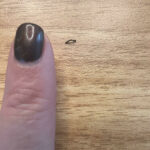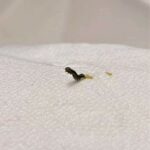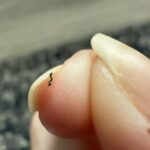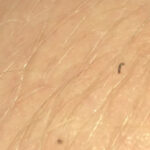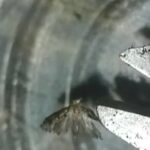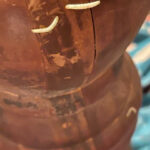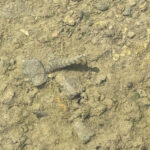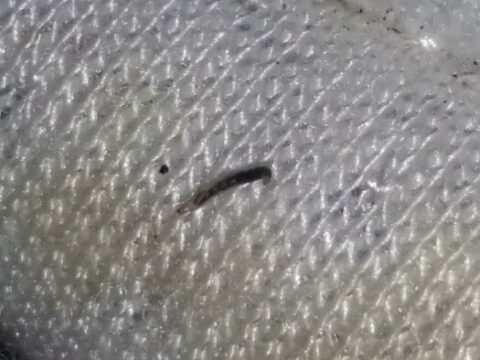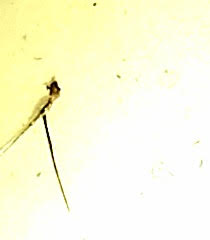
“These teeny tiny worm-type things have suddenly appeared in our baby’s cot!” writes Kristin in her submission regarding the segmented creature with the bulbous head pictured below. “They look like bits of dirt initially, but when we looked closer they are moving! Could they be inchworms? And is this common in a babies cot? Thank you.” Based on the great photo Kristin sent in, as well as her keen eye for caterpillars, we can confirm that this is indeed an inchworm. Firstly, and most importantly, inchworms are not harmful to babies, or to grown adults for that matter. They are caterpillars of moth species which are endemic to North America, and they are characterized by the placement of their legs (at the front and back) which makes them arch their back as they walk.
Inchworms are not typically found specifically in baby cots, but they are commonly found in the home, not because they are pests, but because they end up here accidentally. Either this inchworm has wandered into the home, or it has hatched there. Seeing as Kristin found multiple inchworms, we would venture to guess that they hatched there. This can be a case of a mother moth getting trapped in the home and laying its eggs because it could not find the way back out, but it could also be a case of the moth laying its eggs there purposefully because they deemed Kristin’s home to be a stable and safe environment for her eggs to develop and hatch. In any case, all Kristin needs to do is move the eggs outside.
To prevent future invasions, it is best practice to keep one’s home as protected against them as possible, which includes mending/replacing torn window screens, sealing sizable cracks in walls and floors, and installing screens in vents where possible. We also recommend that Kristin clean the area around the cot, paying special attention to the walls and ceiling around it. Some species of moths will lay their eggs on walls or ceilings, and it could be that the inchworms are falling from the ceiling into the cot as they hatch. Even if Kristin does not spot any egg clusters on the walls and/or ceiling, we still recommend giving them a wipe as eggs can be difficult to spot with the naked eye. On top of that, vacuuming around the cot and laundering the sheets will help get rid any other eggs or larvae that could still be lurking about.
In conclusion, we think Kristin is absolutely right in identifying these creatures as inchworms. They are nothing to be worried about, but we completely understand her concern for her baby, and that it is nonetheless not pleasant finding inchworms in the cot. We hope this helps, and we wish Kristin and her baby the very best.
All About Worms is always free, always reader-supported. Your tips via CashApp, Venmo, or Paypal are appreciated! Receipts will come from ISIPP Publishing.
You might also find these guys interesting!




